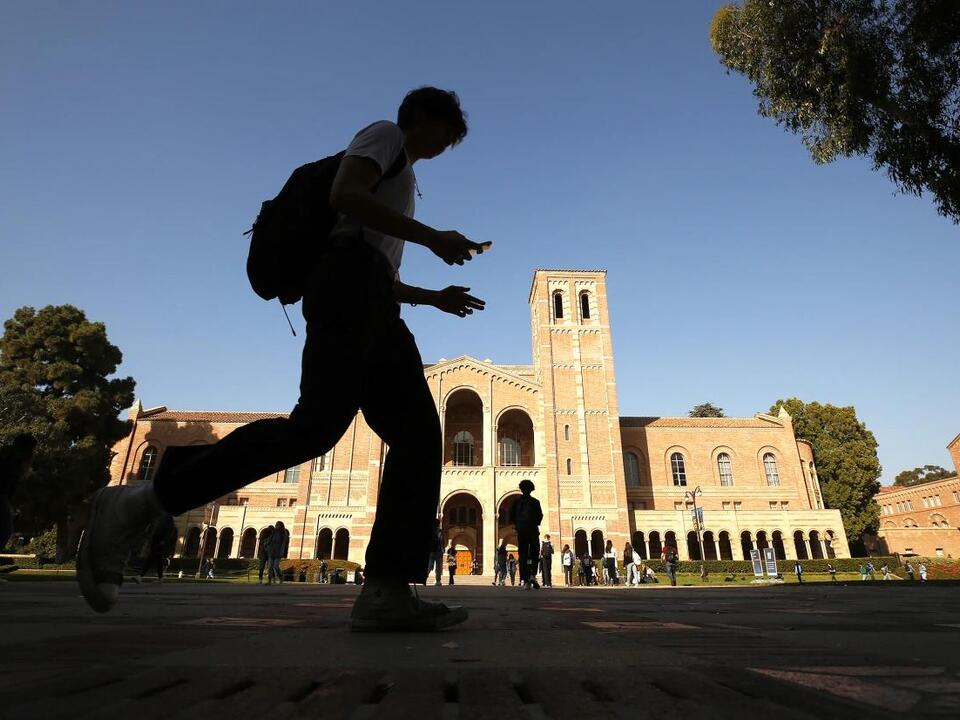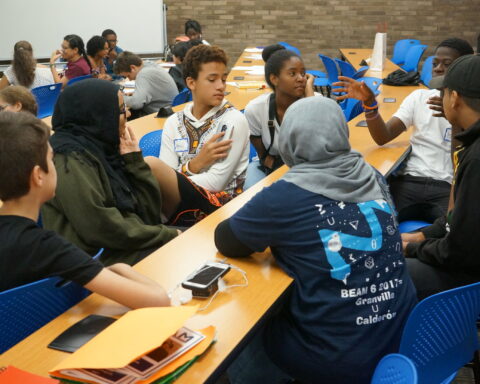The political uproar over racial and ethnic studies programs in higher education is clouding the reality that few four-year institutions offer a major in Latino studies.
Such small numbers also are the reality with majors in the study of other racial and ethnic groups.
A major in Latino studies is offered by just 89 of more than 2,600 four-year colleges and universities, according to a new report by The Latinx Research Center at the University of California, Berkeley.
Further, the majority of those programs, most established after the Mexican American and Puerto Rican student movements of the 1960s and 1970s, are dramatically underfunded and understaffed, with many having one or no core tenure-track faculty in the program, the researchers found.
Just 252 four-year higher education institutions, or 9%, offer an African American or a Black studies major; 52, or 2%, offer an Asian American studies major; 74 or 3% offer a Native American studies major; and 146 or 5% offer a broader Ethnic Studies major, the Berkley research released this month found.
Given those numbers, the turmoil over ethnic studies seems “overblown,” said G. Cristina Mora, the study’s lead author.
“We are far from having an equitable higher education system that offers the classes and research opportunities on all communities, and at the same time, it’s quite ironic that these nascent and vulnerable programs are targeted because they are somehow taking over,” she added.
“Lack of investment in Latino studies is really a willful blindness as we move into the future,” she said.
Conservative fears over the study of white supremacy’s role in the making of the U.S. and its persistence in American institutions have led to campaigns to narrow ethnic studies instruction.
But Latino and other racial and ethnic studies not only tell the stories of respective communities, but also are critical to collecting demographic data, Mora said.
Students in programs with classes on Latino demographics, Mora said, gain better understanding of why some cities are growing at a faster rate than others. Through Latino politics classes, students learn to better understand Latino political trends and how they differ from one state to the next, she said.
Nonetheless, the teaching of accomplishments, histories, demographics, culture and more of Latino, Black, Asian and Native Americans and others has become a magnet for political vitriol and a conservative clampdown.
In Florida — where nearly 6 million or more than a quarter of residents are Latino — a House bill aims to curtail teaching about race and the histories of Latinos and others. The bill is based on the political wish list of Florida Gov. Ron DeSantis, who is expected to be a 2024 Republican presidential candidate. Texas has also targeted racial and ethnic studies and their instructors, even though Latinos outnumber every other racial group in the state, including non-Hispanic white people.
Critics of ethnic studies seem to be “operating on a caricature of what this intellectual study is,” Mora said.
Researchers ‘alarmed’ by academia’s slow pace
Mora said she and her fellow researchers launched their study to see if universities have been keeping pace.
The U.S. has some 62 million Latinos whose backgrounds range from those with deep roots in regions that were part of Spain and Mexico before they were U.S. states, to descendants of enslaved people exported to Latin America, to recent arrivals in the country. More than half of the nation’s growth in 2020 was driven by Latinos, while the white population numbers have shrunk.
The Latino population’s younger makeup means it is providing a steady stream of college-age Americans and will do so for years to come.
That trend is reflected in the increase in Hispanic Serving Institutions, or HSIs, which numbered 571 in 2021-22. HSIs are two- and four-year institutions with 25% or more full-time, enrolled students are Hispanic or Latino. Latino enrollment at all four-year institutions has been increasing over the past couple of decades.
Mora said they expected to find some growth in the hiring of Latino faculty and investment in Latino studies. She said, however, that they were “alarmed” by how flat the trends have been.
Their research also showed that most of the growth of Latino studies programs is happening at private universities. Some of the newer programs appear to be “shell” programs when it comes to staffing and classes. Half of those established since 2000s have none or one faculty member. Often some of the newer programs rely on a lecturer or an adjunct professor to run the program, she said.
The researchers found several programs offered only Spanish-language classes — even though a substantial share of U.S. Latinos don’t speak Spanish fluently, according to Mora.
Latino Studies grew out of a community imperative, the result of strikes and demands that academia reflect “our histories and stories, which is the story of all ethnic studies,” Mora said.
The first universities to form Latino studies programs were public land grant universities in the West and Southwest with strong investment. But the growth of Latino studies programs stagnated in the 1980s and 1990s and jump-started again in the 2000s, with some new programs in the Midwest, following Latino demographic trends, Mora said.
“We don’t suggest that everyone has to major in Latino studies, but we do suggest that Latino studies is a really important course of intellectual understanding that helps all students and all Americans,” she said.
“The way I see Latino studies, I see a real opportunity for diverse understandings of where we have come from to better understand where we are going,” Mora said. “Latino communities aren’t going anywhere. They are just becoming a much more important part of the country.”


